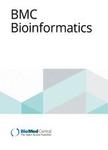版权所有:内蒙古大学图书馆 技术提供:维普资讯• 智图
内蒙古自治区呼和浩特市赛罕区大学西街235号 邮编: 010021

作者机构:Helmholtz Zentrum Munchen Dept Environm Sci Res Unit Analyt BioGeoChem Ingolstadter Landstr 1 D-85758 Neuherberg Germany UMR PAM Univ Bourgogne Inst Univ Vigne & Vin Agrosup Dijon Rue Claude LadreyBP 27877 Dijon France Tech Univ Munich Chair Analyt Food Chem Alte Akad 1085354 Freising Weihenstephan Germany
出 版 物:《BMC BIOINFORMATICS》 (英国医学委员会:生物信息)
年 卷 期:2016年第17卷第1期
页 面:1-14页
核心收录:
学科分类:0710[理学-生物学] 0836[工学-生物工程] 10[医学]
基 金:Lallemand Inc Region de Bourgogne
主 题:Independent Component Analysis Independent Component Analysis Algorithm Algorithm Input Independent Component Analysis Method FastICA Algorithm
摘 要:Background: Interpreting non-targeted metabolomics data remains a challenging task. Signals from non-targeted metabolomics studies stem from a combination of biological causes, complex interactions between them and experimental bias/noise. The resulting data matrix usually contain huge number of variables and only few samples, and classical techniques using nonlinear mapping could result in computational complexity and overfitting. Independent Component Analysis (ICA) as a linear method could potentially bring more meaningful results than Principal Component Analysis (PCA). However, a major problem with most ICA algorithms is the output variations between different runs and the result of a single ICA run should be interpreted with reserve. Results: ICA was applied to simulated and experimental mass spectrometry (MS)-based non-targeted metabolomics data, under the hypothesis that underlying sources are mutually independent. Inspired from the Icasso algorithm, a new ICA method, MetICA was developed to handle the instability of ICA on complex datasets. Like the original Icasso algorithm, MetICA evaluated the algorithmic and statistical reliability of ICA runs. In addition, MetICA suggests two ways to select the optimal number of model components and gives an order of interpretation for the components obtained. Conclusions: Correlating the components obtained with prior biological knowledge allows understanding how nontargeted metabolomics data reflect biological nature and technical phenomena. We could also extract mass signals related to this information. This novel approach provides meaningful components due to their independent nature. Furthermore, it provides an innovative concept on which to base model selection: that of optimizing the number of reliable components instead of trying to fit the data. The current version of MetICA is available at https://***/daniellyz/MetICA.